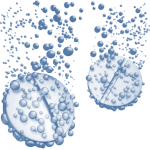Drugs eluting three dimension scaffolds for the treatment of diabetic wounds
Rishita Tyagi, Bharat Kumar Reddy Sanapalli, Veera Venkata Satyanarayana Reddy Karri
Abstract:
Diabetes mellitus (DM) is a group of metabolic diseases identified by hyperglycemia that results from defects in insulin secretion, insulin action or both. It can also be directed as metabolism disorder. It is a disorder which affects the body’s capability to generate or utilize insulin and is identified by irregular high levels of glucose in the blood.DM can lead to a number of complications such as skin, eye and foot complications, neuropathy, kidney disease, stroke, heart disease etc. Diabetic foot ulcer (DFU) is the common problem associated with those who have developed diabetes mellitus. It is one of the common and disabling and normally leads to amputation of the leg. Despite of giving treatment, ulcers tends to become chronic wounds. Although the pathophysiology of diabetic wound is multifactorial, chronic inflammation and lack of tissue regeneration leads to impair wound healing in diabetes. Scaffolds have received greater attention as they promote cell-biomaterial interactions, cell adhesion and extracellular matrix deposition and has potent advantages in treating diabetic foot ulcers. In this review, we have discussed DFU, a cellular scaffold that has been studied for DFU.
Keywords: Diabetes Mellitus, Diabetic Foot Ulcer, Scaffold, Acellular Scaffolds.



